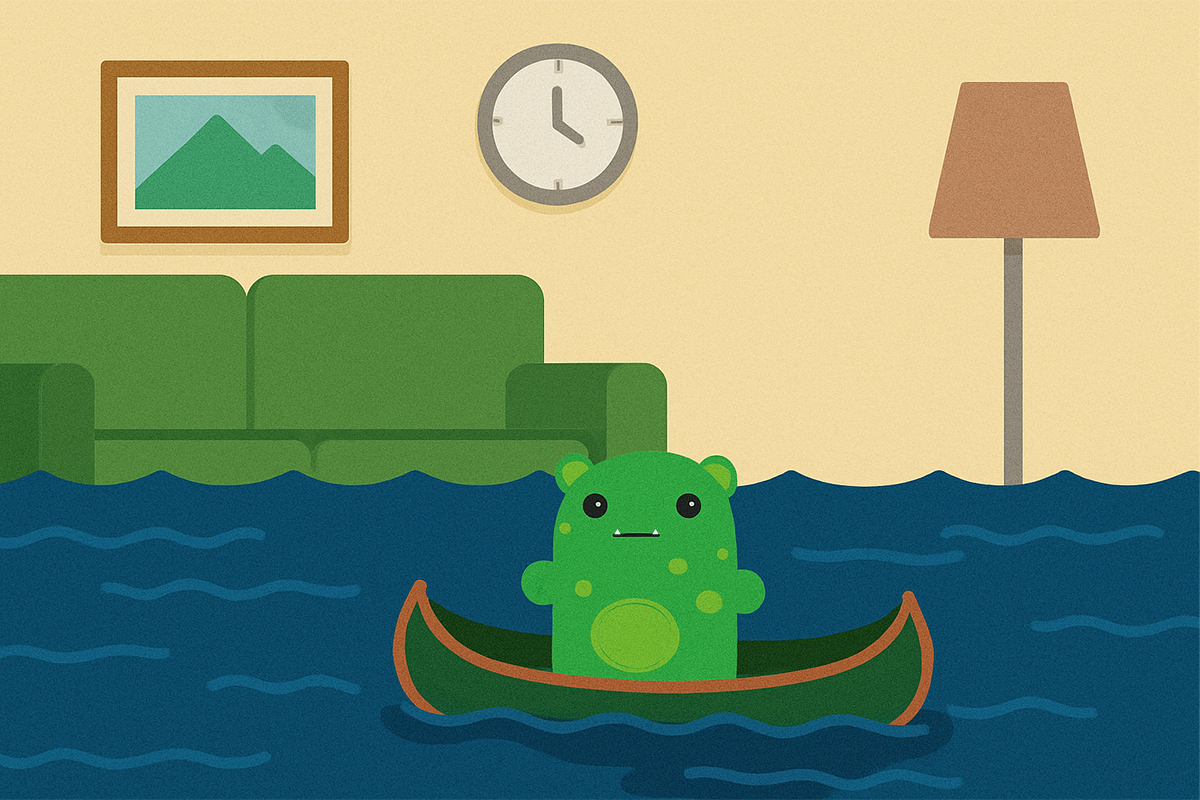
Air Quality Risks After Flooding
When hurricane season hits Florida, most homeowners focus on fallen trees, leaks, or power outages; not the invisible air quality threats left behind. After storms, homes can harbor mold spores, carbon monoxide, and airborne toxins that quietly impact your health.
Mold and Water Damage
Floodwater and humidity create ideal conditions for post-hurricane mold growth. Within 48 hours, spores can spread through drywall, carpet, and insulation.
Health effects include:
- Allergies and sinus irritation
- Asthma and respiratory distress
- Long-term lung sensitivity
Carbon Monoxide from Generators
Power outages often lead to generator use. When operated too close to doors or windows, generators can leak deadly carbon monoxide (CO) indoors.
Safety tips:
- Always use generators at least 20 feet from your home
- Never run them in garages or enclosed spaces
- Install battery-powered CO detectors
Contaminants from Floodwaters
Florida’s floodwaters can carry sewage, fuel, and chemicals that seep into carpets and air ducts. Even after drying, those residues can circulate and degrade indoor air quality Florida residents rely on.
Can Hurricane Damage Affect Your Indoor Air?
Yes, significantly. Moisture trapped in walls or flooring after hurricanes can feed hidden mold and bacteria. VOCs from wet materials and smoke residue can also linger for weeks.
Post-storm air issues include:
- Hidden mold growth in drywall
- Poor ventilation or damaged HVAC systems
- High humidity and VOC exposure
- Residual smoke or generator fumes
How to Restore Healthy Indoor Air
Restoring your home’s indoor air quality means more than mopping up water — it requires a systematic cleanup and testing approach.
1. Remove Water-Damaged Materials
Discard soaked drywall, insulation, or carpet after 48 hours. These materials cannot be fully sanitized.
2. Use HEPA Filtration and Dehumidifiers
Run HEPA air purifiers and dehumidifiers nonstop to keep humidity under 50% and capture fine mold particles.
3. Schedule Professional Storm Recovery Air Testing
Hire certified technicians for storm recovery air testing to detect hidden mold, bacteria, or CO levels. Results confirm whether your home’s air is truly safe to breathe again.
4. Clean and Inspect HVAC Systems
Contaminants thrive in ducts and coils. Have a professional deep-clean your HVAC system post-flood to prevent mold recirculation.
5. Monitor Carbon Monoxide Levels
Install CO detectors on every level and test them monthly during hurricane season.
Key Takeaways
✅ Mold can grow fast — within 24–48 hours after flooding
✅ Use generators safely — always outdoors, away from windows
✅ Floodwaters spread toxins — impacting HVAC and air ducts
✅ Professional testing is vital — to confirm healthy air quality
✅ Prevention saves lives — early detection reduces health risks and repair costs
FAQ: Protecting Indoor Air Quality in Florida
Q: How soon after a storm should I test my indoor air?
A: Within 3–5 days. Mold and bacteria can grow quickly once moisture remains trapped indoors.
Q: What’s the best way to remove post-hurricane mold?
A: Use professional remediation services. DIY cleanup can spread spores if not properly contained.
Q: Can air purifiers help after flooding?
A: Yes. HEPA filters can reduce airborne mold, dust, and contaminants. But they don’t replace the need for storm recovery air testing.
Q: Are there government programs in Florida for storm-related air quality help?
A: Yes, the Florida Department of Health and FEMA occasionally provide mold cleanup or testing assistance during declared disasters.
Wrapping Up
Your home may look clean after a hurricane, but invisible air pollutants can still threaten your health. Protect your family by focusing on post-hurricane mold prevention, safe generator use, and professional storm recovery air testing.
By maintaining clean, breathable air, you’ll protect your property value and your peace of mind, no matter what the next storm brings. If you need help with mold assessment or indoor air quality testing, don’t hesitate to schedule an appointment and have a certified professional assess your home or business.


